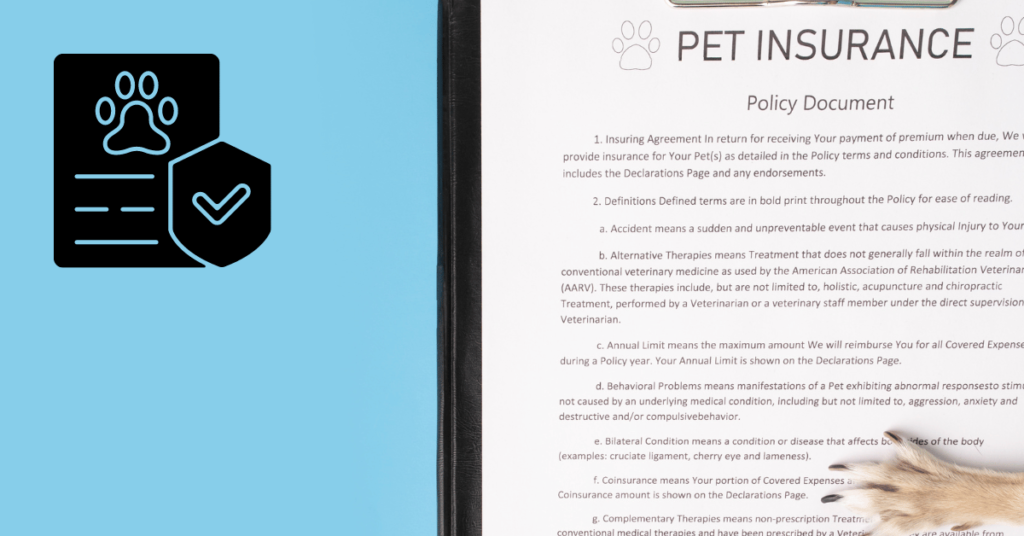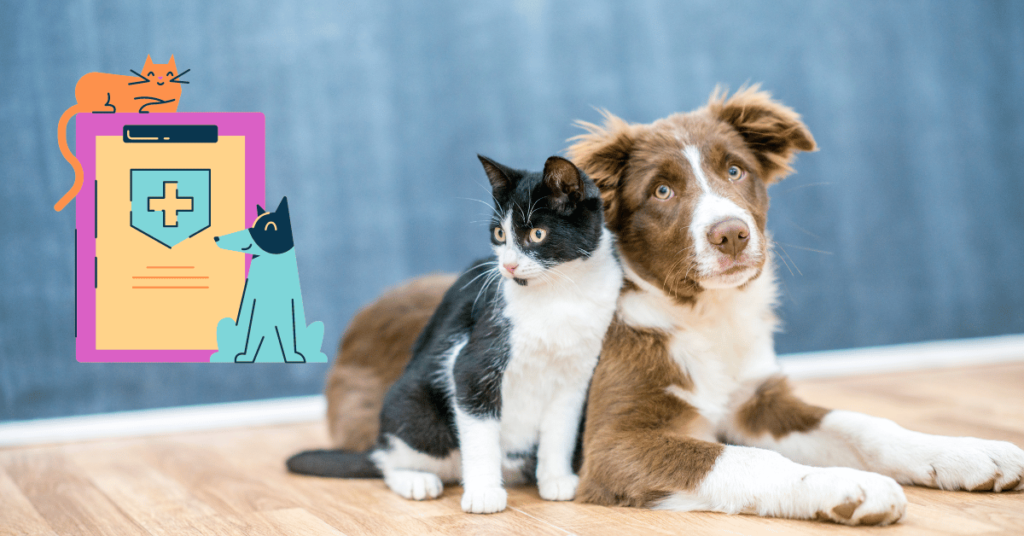Pet insurance helps pet owners manage unexpected medical expenses for their animals, ensuring pets receive necessary care without financial strain. While it operates differently from human health insurance, pet insurance can be a critical safety net for covering the costs of accidents, illnesses, and preventive care for pets.
How Does Pet Insurance Work?
Pet insurance is generally structured as reimbursement insurance. Pet owners pay for veterinary services upfront and then submit a claim to their insurance provider. The insurance company processes the claim and reimburses the pet owner for a portion of the costs, after deducting any applicable copay, deductible, and uncovered expenses.
This system contrasts with human health insurance, where healthcare providers typically handle the claim process directly with insurance companies. Pet owners should understand that they will need to budget for initial costs, which will later be reimbursed based on their policy’s terms.
Types of Pet Insurance Coverage

Pet insurance policies vary widely depending on the level of coverage chosen. Let’s explore the most common types of pet insurance coverage options:
1. Accident-Only Coverage
Accident-only policies are designed to cover unexpected physical injuries. These plans will help pay for treatments related to accidents such as broken bones, cuts, or swallowed objects. However, they do not cover illnesses, making them a more limited option.
This type of insurance is useful for those who want basic coverage for unexpected physical trauma but may not need broader medical coverage.
2. Accident and Illness Coverage
The most comprehensive pet insurance policies cover both accidents and illnesses. Illnesses can range from infections, allergies, and chronic diseases to more severe conditions like cancer. This type of policy offers broader protection and is generally the recommended option for pet owners.
Given that medical emergencies can occur at any time and often come with steep bills, accident and illness coverage provides the best protection for pets and peace of mind for their owners. The cost of treating an illness or accident can easily reach thousands of dollars, and insurance helps offset these expenses.
3. Wellness Care Coverage
Wellness care coverage focuses on routine veterinary visits, including annual check-ups, vaccinations, teeth cleaning, and preventive treatments like flea and tick medication. Often offered as an add-on to accident and illness policies, wellness coverage helps manage predictable healthcare costs.
While some pet owners choose to pay for wellness services out of pocket, this type of coverage can be especially helpful for young pets (like puppies or kittens) who need frequent vaccinations and procedures, as well as for older pets who require more consistent monitoring.
4. Exotic Pet Coverage
Some insurance companies offer coverage for exotic pets like birds, reptiles, and small mammals (such as rabbits or guinea pigs). However, most policies are geared toward cats and dogs. Pet owners with exotic animals should inquire specifically about companies that cover non-traditional pets, as these are less common.
Factors That Affect Pet Insurance Coverage

When choosing pet insurance, several factors can influence what is covered, how much you’ll pay, and whether your pet qualifies for certain types of coverage:
1. Pre-existing Conditions
Most pet insurance policies exclude pre-existing conditions. These are health issues that existed before the policy was taken out. If your pet has a chronic condition such as diabetes or feline leukemia, some insurance providers will not cover related treatments or may offer limited options, such as accident-only policies.
2. Age of the Pet
Many insurers adjust coverage based on the pet’s age. Younger pets are easier to insure at lower premiums, while older pets often face higher premiums or restrictions on coverage. Some insurers may refuse accident and illness coverage altogether for senior pets and offer accident-only coverage instead.
3. Breed
Certain breeds of dogs and cats are more prone to specific health issues, which can affect insurance premiums. Breeds with known hereditary conditions may be more expensive to insure due to their higher likelihood of requiring medical treatment.
4. Location
The cost of veterinary care varies by location, meaning insurance premiums often fluctuate based on your zip code. Pet owners in urban areas where veterinary care is typically more expensive can expect to pay higher premiums than those in rural areas.
What’s Not Covered by Pet Insurance?
Not all medical expenses are covered by pet insurance. Exclusions can vary from provider to provider, but common exclusions include:
- Pre-existing conditions: As mentioned, most insurers will not cover health issues your pet had before you purchased the policy.
- Elective procedures: Some cosmetic or non-essential procedures, such as ear cropping or tail docking, are typically not covered.
- Breeding-related costs: Expenses associated with breeding, pregnancy, or delivery are generally excluded.
- Experimental treatments: Certain cutting-edge or experimental treatments might not be covered unless specifically outlined in the policy.
Always ask the insurance provider for a review of your pet’s medical history before buying a policy to know upfront what conditions might not be covered.
How Much Does Pet Insurance Cost?
Pet insurance premiums are determined by factors such as your pet’s age, breed, and where you live. The average monthly premium for a dog is around $35 for $5,000 in annual coverage, while the average for a cat is approximately $28. However, for unlimited annual coverage, premiums can rise to $56 for dogs and $50 for cats.
Older pets, particularly those over seven years old, tend to have higher premiums because they are more prone to chronic illnesses. Additionally, premium costs will typically increase as your pet ages, though insurers often allow you to adjust deductibles, copays, and coverage limits to manage costs.
Alternatives to Pet Insurance
While pet insurance is the most common way to manage veterinary expenses, there are alternatives available:
1. Eusoh
Eusoh is a community-sharing platform similar to healthcare cost-sharing systems like Medishare. Members share the costs of veterinary bills, with a monthly cap on contributions. This can be a more affordable option for some pet owners, though pre-existing conditions are not covered.
2. Pet Assure
Pet Assure offers a discount on veterinary services rather than reimbursing medical expenses. Members receive a 25% discount on most services at participating veterinary clinics, making it a viable alternative for pets with pre-existing conditions.
3. Pawp
Pawp provides a 24/7 telehealth service along with an emergency fund of up to $3,000 per year. The fund covers true emergency situations, but pre-approval from a Pawp veterinarian is required. This can be a helpful service for households with multiple pets.
Final Thoughts
Pet insurance can be a lifesaver when it comes to managing unexpected and often expensive veterinary bills. It offers a financial cushion that ensures your pet receives necessary care without jeopardizing your finances. However, pet owners should carefully evaluate their needs and budget, understanding that pet insurance is most useful when covering accidents and illnesses that would otherwise be difficult to pay for out of pocket.
For many, the peace of mind that comes with knowing their pet’s healthcare costs are covered makes pet insurance a worthwhile investment. However, those who are able to save for emergencies or who have financial limits on how much they are willing to spend on pet care might opt to forego insurance.
In the end, the right choice depends on your pet’s health, your financial situation, and your willingness to handle unexpected expenses.
So that was all about this article. If you have any further questions feel free to comment down below. We are always here to help you!




